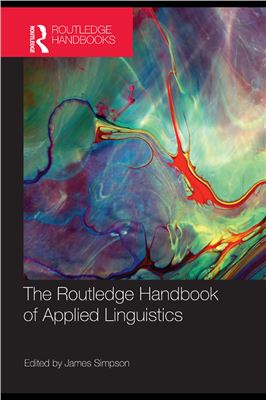The five sections of the volume encompass a wide range of topics
from a variety of perspectives. The forty-seven chapters connect
knowledge about language to decision-making in the real world. The
volume as a whole highlights the role of applied linguistics, which
is to make insights drawn from language study relevant to such
decision-making.
The chapters are written by specialists from around the world. Each one provides an overview of the history of the topic, the main current issues and possible future trajectory. Where appropriate, authors discuss the impact and use of new technology in the area. Suggestions for further reading are provided with every chapter. The Routledge Handbook of Applied Linguistics is an essential purchase for postgraduate students of applied linguistics.
Applied linguistics in action
Language policy and planning
Business communication
Translation and interpreting
Lexicography
The media
Institutional discourse
Medical communication
Clinical linguistics
Language and ageing
Forensic linguistics
Language leaing, language education
Second language acquisition
Language teaching methodology
Technology and language leaing
Language teacher education
Bilingual education
English for academic purposes
Language testing
Classroom discourse
Language socialization
Language, culture and identity
Language and culture
Identity
Gender
Ethnicity
Sign languages
World Englishes
Linguistic imperialism
Multilingualism
Language and migration
Perspectives on language in use
Discourse analysis
Critical discourse analysis
Neurolinguistics
Psycholinguistics
Sociocultural and cultural-historical theories of language development
Sociolinguistics
Linguistic ethnography
Literacy
Stylistics
Descriptions of language for applied linguistics
Grammar
Lexis
Phonetics and phonology
Corpus linguistics
Cognitive linguistics
Systemic functional linguistics
Generative grammar
The emergence of language as a complex adaptive system
Multimodality
The chapters are written by specialists from around the world. Each one provides an overview of the history of the topic, the main current issues and possible future trajectory. Where appropriate, authors discuss the impact and use of new technology in the area. Suggestions for further reading are provided with every chapter. The Routledge Handbook of Applied Linguistics is an essential purchase for postgraduate students of applied linguistics.
Applied linguistics in action
Language policy and planning
Business communication
Translation and interpreting
Lexicography
The media
Institutional discourse
Medical communication
Clinical linguistics
Language and ageing
Forensic linguistics
Language leaing, language education
Second language acquisition
Language teaching methodology
Technology and language leaing
Language teacher education
Bilingual education
English for academic purposes
Language testing
Classroom discourse
Language socialization
Language, culture and identity
Language and culture
Identity
Gender
Ethnicity
Sign languages
World Englishes
Linguistic imperialism
Multilingualism
Language and migration
Perspectives on language in use
Discourse analysis
Critical discourse analysis
Neurolinguistics
Psycholinguistics
Sociocultural and cultural-historical theories of language development
Sociolinguistics
Linguistic ethnography
Literacy
Stylistics
Descriptions of language for applied linguistics
Grammar
Lexis
Phonetics and phonology
Corpus linguistics
Cognitive linguistics
Systemic functional linguistics
Generative grammar
The emergence of language as a complex adaptive system
Multimodality

